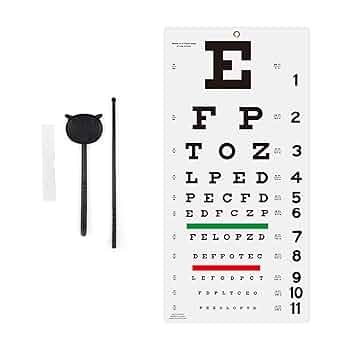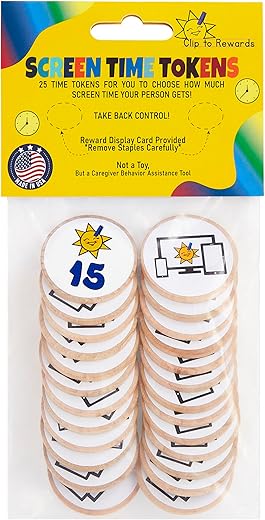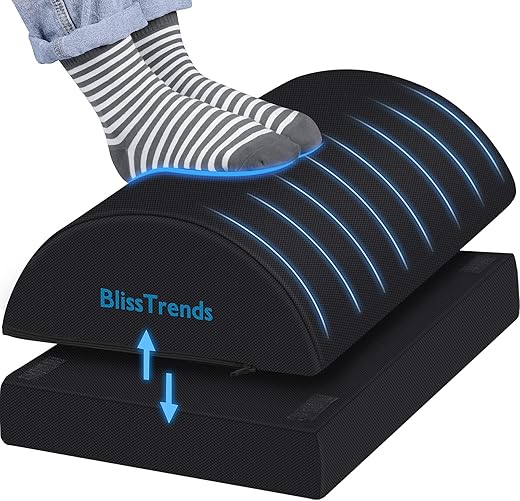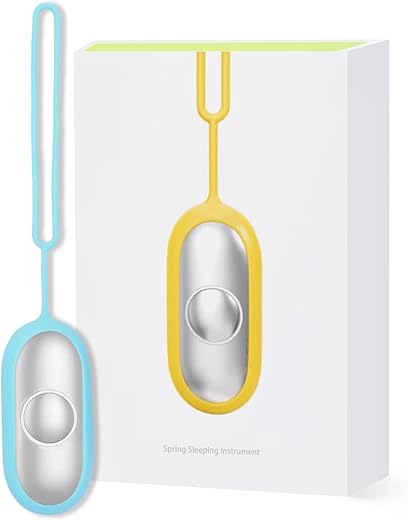The Blue Light Glasses Pitfalls We All Need to Watch Out For

Understanding Blue Light Glasses: A Step Towards Eye Health
In a world where screens dominate our daily lives, BLUE LIGHT GLASSES have risen to prominence as a popular solution for eye protection. We often hear claims about their ability to reduce eye strain, enhance sleep quality, and shield us from the potentially harmful effects of blue light emitted by our devices. However, there are common pitfalls that we must be aware of to truly benefit from these glasses.
While blue light glasses can play a helpful role in our eye health, simply wearing them isn’t enough. We may unknowingly make decisions that limit their effectiveness. It’s crucial to understand these mistakes so we can make informed choices about our eye care.
Join us as we explore the areas where we might falter and discover how to maximize the protective benefits of our blue light glasses. Together, let’s ensure we are taking the best care of our eyes.




Choosing the Wrong Lens Type
When we decide to invest in blue light glasses, we might feel overwhelmed by the sheer number of options available. But not all blue light glasses are created equal. Some products that claim to filter out blue light might not provide adequate protection or could even be tinted inappropriately, leading to dissatisfaction or discomfort during use.
Understanding Lens Types
To navigate this landscape effectively, we need to familiarize ourselves with different lens types. Blue light glasses generally come with two kinds of lenses:
When choosing between them, it’s essential to consider our specific needs. For instance, if our primary use is long hours in front of a computer screen during the day, a clear lens with a good blue light filter may suffice. However, if we’re looking to reduce eye strain while gaming or binge-watching late into the night, amber-tinted lenses could be the better choice.
Consulting Professionals
Additionally, it’s wise to consult with eye care professionals before making a purchase. They can provide personalized recommendations based on our vision and lifestyle. Some questions we might consider asking include:
Product Recommendation
As we weigh our options, one fantastic choice to consider is the ELITE Blue Light Glasses for All. Designed with a thorough understanding of blue light filtration, these glasses can help us protect our eyes effectively without sacrificing style.
In our quest for the best blue light glasses, let’s also be cautious of relying solely on them. The next section will delve into how these glasses fit into a larger picture of our eye health and daily habits, emphasizing the importance of a holistic approach to eye care.
Relying Solely on Blue Light Glasses
While blue light glasses can bring significant relief and protection, it’s easy to fall into the trap of thinking they’re a one-stop solution for eye health. We must remember that they are a piece of the puzzle rather than the entire picture. To truly optimize our eye comfort, we need to adopt additional practices that complement the use of these glasses.
The Importance of Breaks
A common mistake many of us make is sitting glued to screens for extended periods. Regardless of how sophisticated our blue light glasses are, continuous screen time can lead to fatigue and discomfort, often referred to as digital eye strain. To combat this, we can follow the 20-20-20 rule: every 20 minutes, take a 20-second break and focus on something 20 feet away. This simple practice can do wonders for our eye health, allowing our eyes to relax and adjust their focus.
Proper Lighting Matters
Lighting conditions in our environment are just as crucial as the glasses we wear. Harsh, direct lighting or reflections from screens can exacerbate eye strain, making our glasses less effective. Ensuring we have adequate ambient lighting while using screens—such as through soft desk lamps or natural light—can enhance our visual comfort. Here are some tips to improve lighting:
Staying Hydrated
Hydration plays an often-overlooked role in eye health. Dehydration can lead our eyes to feel dry and irritated, regardless of our use of blue light glasses. Keeping a water bottle close and sipping throughout the day can help maintain moisture levels in our eyes.
Additional Tools
In addition to blue light glasses, we can explore other protective options. For example, screen filters designed to reduce glare or apps that adjust screen brightness according to the time of day can further aid in reducing eye strain.
As we can see, blue light glasses are effective but should never be our sole line of defense. By incorporating breaks, proper lighting, hydration, and additional tools into our routine, we create a more holistic approach to eye health.
Building on this perspective, the next section will address another crucial aspect: finding the right fit for our glasses. A proper fit not only contributes to comfort but also ensures we maximize the protective benefits these tools offer.
Incorrect Fit and Comfort Issues
Wearing blue light glasses should feel good—physical comfort is essential for their effectiveness. If our glasses don’t fit well, we may find ourselves distracted by discomfort instead of focusing on protecting our eyes. An improper fit can create a myriad of issues, from headaches and unwanted pressure points to providing less than optimal blue light filtration.
Finding the Right Fit
Just like clothing, the fit of our blue light glasses can vary depending on our unique face shape and size. When we purchase a pair, we should consider the following key factors:
Comfort Matters
Aside from fit, we should also pay attention to the materials used in our glasses. Lightweight frames made of materials like titanium or flexible plastic can enhance comfort during extended use. We want to choose glasses that we can wear for long hours without irritation.
Think about how we feel after a long day in front of a screen. If our glasses add to our fatigue instead of alleviating it, we may be doing ourselves a disservice. When trying on a pair, we should look for:
Real-World Examples
Imagine sitting down to binge-watch our favorite series only to feel the constant urge to adjust our glasses. If they sit too low on our nose or pinch our temples, it detracts from the entire experience.
In contrast, a well-fitting pair—like the renowned
—can not only protect our eyes but also allow us to enjoy our screens without discomfort. Users often rave about their lightweight design and adjustable features, making them suitable for long-term wear.As we consider the fit and comfort of our blue light glasses, it’s also essential not to overlook our broader eye care routine. In the next section, we will discuss the importance of maintaining regular eye check-ups to ensure our vision health while incorporating blue light glasses into our daily lives.
Neglecting Regular Eye Check-ups
While our newly acquired blue light glasses may feel like the ultimate solution for eye strain, we shouldn’t overlook the necessity of regular eye examinations. It’s tempting to think that simply wearing these specialized glasses can eliminate the need for professional assessments. However, comprehensive eye care involves much more than just protection against blue light.
The Importance of Regular Eye Exams
Just like a well-tuned car needs regular servicing, our eyes require consistent attention too. Regular eye check-ups are essential for detecting potential issues before they become significant problems. Here’s why we should make these appointments a priority:
Building a Holistic Eye Care Routine
Incorporating eye exams into our lives shouldn’t be viewed as a chore but as an essential part of keeping our eyes healthy. We can take a proactive approach by:
Conversing with our eye care provider can lead to a partnership focused on maintaining our eye health. As we think about combining regular check-ups with our use of blue light glasses, it’s refreshing to consider how these elements work together to protect our vision.
The next section will emphasize the significance of recognizing the broader context of our screen time habits and how they interact with our eye care choices.
Ignoring the Broader Context of Screen Time
In our digital age, it’s easy to fixate on the concept of blue light and its effects on our eyes. However, focusing solely on blue light glasses can overlook the complex relationship our screen habits have with ocular health. Let’s delve into the broader context of screen time, including duration, type of use, and how these factors shape our visual comfort.
Exploring Screen Time Habits
We often underestimate how the way we use screens affects our eyes. For instance, not all screens emit the same levels of blue light—smartphones, tablets, and computers may vary in intensity. Plus, the purpose of our screen time matters. Are we relaxing with a movie, working on a project, or scrolling through social media?
Understanding these nuances can help us make smarter choices:
Making Thoughtful Adjustments
Recognizing our screen habits is the first step toward improving our eye health. Once we are aware of our usage patterns, we can make small adjustments:
Incorporating these adjustments into our daily routine supports our visual health far beyond simply donning blue light glasses. It’s about creating a balanced approach that acknowledges how we interact with our devices, recognizing that multiple factors contribute to eye fatigue.
Cultivating Healthy Screen Habits
As we continue to navigate a world increasingly dominated by screens, cultivating healthy habits becomes paramount. Simple actions such as positioning our screens to minimize glare, ensuring our posture is supportive, and adjusting our screen brightness according to the ambient light can make a significant difference.
In summary, our use of blue light glasses is just one piece of the puzzle. By understanding and refining our screen habits, we can create a more supportive environment for our eyes. This perspective leads us into our next section, where we’ll draw all these elements together, emphasizing the importance of being informed to make the best decisions for our eye care.
Being Informed for Better Eye Care
In conclusion, while blue light glasses can be a valuable tool for protecting our eyes, it’s important to be aware of the common mistakes associated with their use. By understanding these pitfalls, we can make more informed choices that enhance our overall eye health and comfort in our digital world.
Let’s remember that blue light glasses should complement, not replace, our broader eye care practices. Regular eye check-ups and thoughtful screen time management are just as crucial for maintaining our ocular health. Together, we can navigate the challenges of our screen-centric lives and safeguard our vision for years to come. So, let’s stay informed and proactive in our eye care journey!








Honestly, I didn’t think about how important it is to have a proper fit. I tried a pair that were too tight, and my nose bridge was killing me! 😂 Now I’m back to square one looking for a comfy pair. Any suggestions?
Comfort is everything! Make sure to check the dimensions before buying. You might want to look at the ELITE Blue Light Glasses; they’re known for comfort!
Check reviews! Sometimes they mention fit issues. I had that problem too but found a great pair by looking at user feedback!
I’ve been using blue light glasses for a few weeks, but I still get headaches. I guess I’m not drinking enough water or something. 🤷♀️ Anyone else have this issue?
Same! I realized I wasn’t blinking enough while staring at the screen. Crazy how that affects us!
Staying hydrated is super important! Make sure you’re also taking regular breaks.
I just got a pair of those Advanced Blue Light Blocking Glasses last week. Honestly, I thought they were all hype, but I can actually feel a difference! My eyes don’t feel as strained after long hours on my laptop. But I totally agree about the importance of regular eye check-ups. Can’t just rely on glasses! 🤓
Thanks for sharing, Sarah! Regular check-ups are key—glasses can only do so much!
That’s awesome to hear! I was skeptical too, but glad they worked for you! Do you think they help with headaches too?
So true about check-ups! I got glasses thinking they’d solve everything, but I still had to get my prescription updated. Ugh.